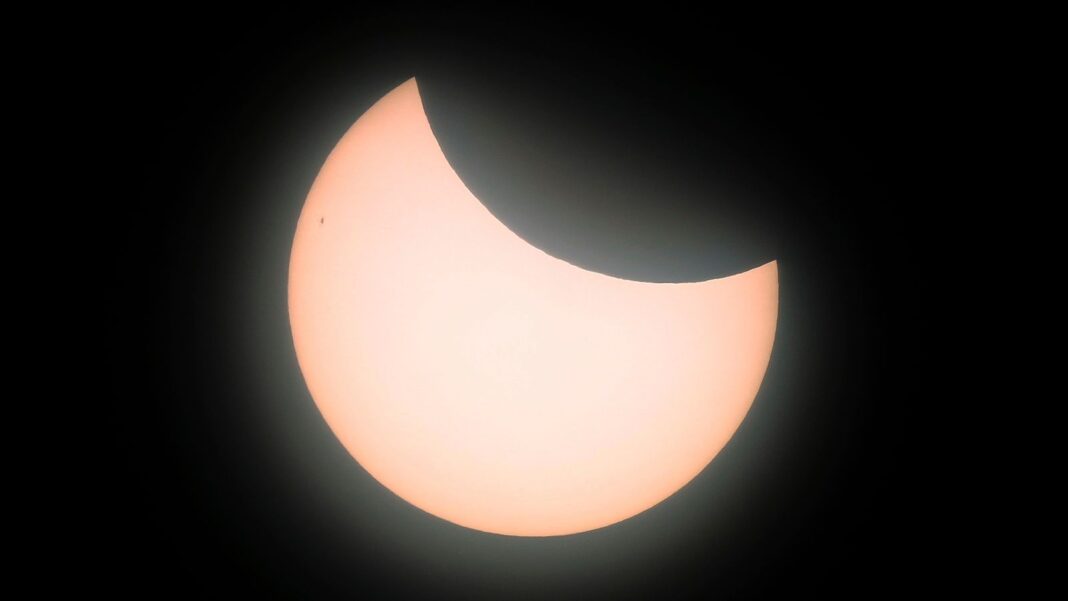UK stargazers were treated to a partial solar eclipse on Saturday morning, a phenomenon that sees the sun partially obscured by the moon.
Up to 40% of the sun was covered as the moon passed between the sun and Earth, partly obscuring the star.
Members of the public gathered to watch the spectacle in Greenwich while thousands more followed online.

Science correspondent Thomas Moore wearing solar eclipse viewing glasses in Greenwich

Saturday’s partial solar eclipse at around 10.30am. Pic: Royal Observatory Greenwich
“It’s a different way of experiencing the mechanics of the solar system for yourself,” said Catherine Muller, an astronomer at Royal Observatory to Sky News science correspondent Thomas Moore.
“We know about it theoretically, we know that the moon orbits the Earth and they might pass by us but really getting to see it in a new and different way is quite exciting for a lot of people.”

Hobby astronomers watch the partial eclipse in Germany. Pic: AP

A solar telescope that projects a magnified image of the sun on to a piece of paper
Looking directly at the sun is dangerous so astronomers used glasses, solar telescopes and pinhole cameras to watch the event.

The beginning of the partial eclipse above the roof of Berlin’s Olympic Stadium. Pic: Reuters
The eclipse was visible across several other parts of the world, including western Europe, Greenland, north-west Africa and north-east North America.
For people in the southeast of England – where the weather meant the UK views were best – the peak of the eclipse was at around 11.03am.
At that point, around 30-40% of the sun was obscured, according to the Royal Observatory.
Eclipse chasers in awe as moon takes a nibble from the sun
Most of us are normally unaware of the mechanics of the solar system.
But when the silhouette of the moon slides across the disc of the sun during an eclipse you get to marvel at the precision movement of celestial objects.
At the Royal Observatory in Greenwich, home of the meridian, the partial eclipse started at 10.07, with the moon appearing to take nibble from the edge of the sun.
Crowds watched through eclipse glasses, awed by the best show from Earth.
Wispy cloud had drifted across the sun by the time the eclipse peaked an hour later. But not enough to spoil the view.
Northwest Scotland had the most coverage of the sun with 47.9% in Gallan Head, with Manchester getting 36.1% of coverage.
Dover had the least coverage of the sun with only 28.1%.
The next total solar eclipse is not for another 65 years in 2090, so Ms Muller recommends “making the most of the partial ones when they’re around”.







